A Journey into the Korean Regional Cuisine
Introduction
The culinary Journey of Korea is as diverse and vibrant as its culture and history. Korean cuisine, known for its bold flavors, rich textures, and healthful ingredients, has gained global recognition. What sets Korean food apart is its distinct taste and the regional variations that highlight the unique local ingredients and cooking techniques.
In this blog post, we will explore the different regional cuisines of Korea, the local ingredients that are used, traditional recipes, and how culture has influenced Korean cuisine.
A Glimpse into the Korean Culinary Heritage
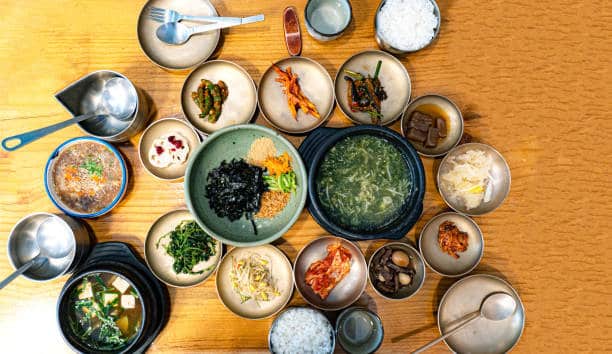
Korean cuisine is deeply rooted in a long history that goes back thousands of years. Influenced by its geographical location, historical events, and agricultural practices, Korean food has evolved into a well-balanced and nutritious cuisine. The central pillars of Korean cooking are rice, vegetables, and meats, often accompanied by an array of side dishes known as “banchan.”
Read More on South Korea: Joseon Cuisine and Its Cultural Significance
Journey Regional Cuisines of Korea
Korean cuisine can be broadly categorized into five regional cuisines: Seoul, Gangwon, Jeolla, Gyeongsang, and Jeju. Each cuisine is unique in its own way, and the regional dishes reflect the ingredients and flavors that are available in that area.
Seoul Cuisine
Seoul, the capital city of South Korea, has a cuisine that is influenced by the royal court cuisine of the Joseon Dynasty (1392-1910) and the street food culture that developed in the city during the 20th century. The cuisine is characterized by its delicate flavors and presentation.
One of the most famous dishes in Seoul cuisine is bibimbap, which is a bowl of rice topped with vegetables, meat, and a fried egg. The dish is served with a spicy sauce made from gochujang (red chili paste), sesame oil, and soy sauce.
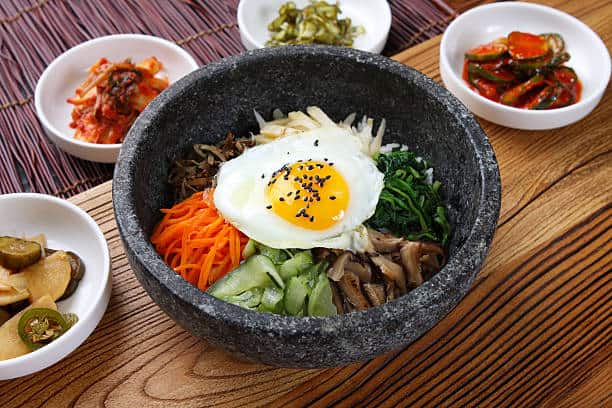
Another popular dish is bulgogi, which is marinated beef that is grilled or stir-fried. The marinade is made from soy sauce, sugar, sesame oil, and garlic, and gives the beef a sweet and savory flavor.
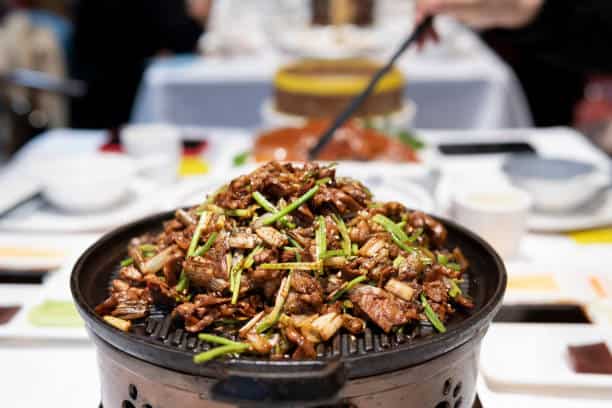
Journey Gangwon Cuisine
Gangwon is a province located in the northeastern part of South Korea, and its cuisine is known for its fresh seafood and mountain vegetables. The province is known for its cold winters and hot summers, which have influenced the types of food that are grown and consumed in the area.
One of the most famous dishes in Gangwon cuisine is hweh (raw fish). The fish is sliced thinly and served with a variety of side dishes such as soy sauce, wasabi, and vegetables. The dish is typically served with a bowl of rice and a spicy soup made with fish bones.
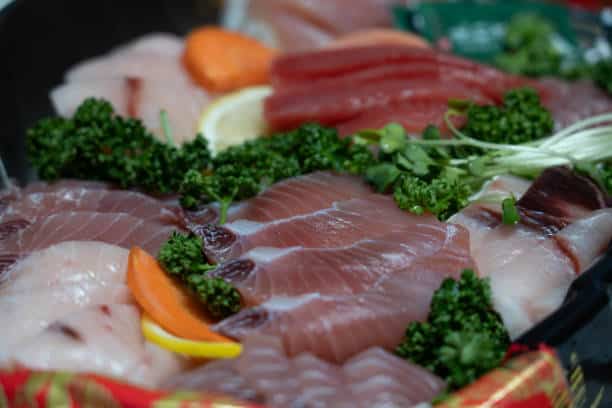
Another popular dish is dak galbi, which is a spicy stir-fry dish made with chicken, vegetables, and a spicy sauce made from gochujang. The dish is typically served with a bowl of rice and a variety of side dishes.

Jeolla Cuisine
Jeolla is a province located in southwestern Korea, and its cuisine is known for its hearty and spicy flavors. The province is known for its agricultural products such as rice, beans, and vegetables, as well as its coastal seafood.
One of the most famous dishes in Jeolla cuisine is kongnamul gukbap, which is a soup made with soybean sprouts and rice. The soup is typically served with a variety of side dishes such as kimchi and pickled vegetables.
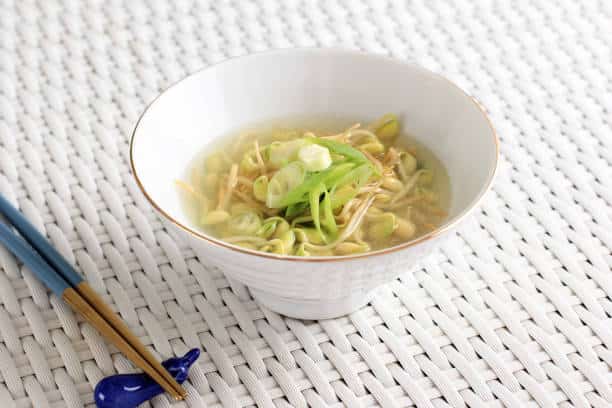
Another popular dish is bibim naengmyeon, which is a cold noodle dish made with buckwheat noodles, sliced beef, and a spicy sauce made from gochujang. The dish is typically served with a bowl of cold broth and a variety of side dishes.

Gyeongsang Cuisine
Gyeongsang is a province located in southeastern Korea, and its cuisine is known for its bold and spicy flavors. The province is known for its agricultural products such as rice, beans, and vegetables, as well as its coastal seafood.
One of the most famous dishes in Gyeongsang cuisine is sannakji, which is a live octopus that is sliced thinly and served with a variety of side dishes such as soy sauce and vegetables. The dish is known for its unique texture and is typically enjoyed with a glass of soju (Korean liquor).

Another popular dish is dwaeji gukbap, which is a soup made with pork and rice. The soup is typically served with a variety of side dishes such as kimchi and pickled vegetables.

Jeju Cuisine
Jeju is an island located off the southern coast of Korea, and its cuisine is known for its fresh seafood and unique ingredients such as black pork and hallabong (a type of mandarin orange). The island is known for its volcanic soil, which produces high-quality seafood and agricultural products.
One of the most famous dishes in Jeju cuisine is haemul pajeon, which is a pancake made with seafood and scallions. The pancake is typically served with soy sauce and vinegar dipping sauce.
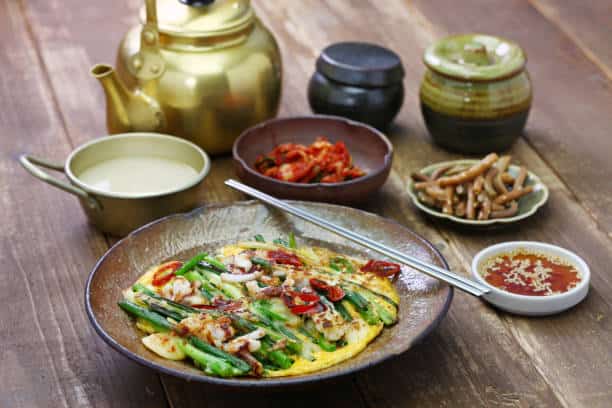
Another popular dish is black pork bulgogi, which is marinated pork that is grilled or stir-fried. The marinade is made from soy sauce, sugar, sesame oil, and garlic, and gives the pork a sweet and savory flavor.
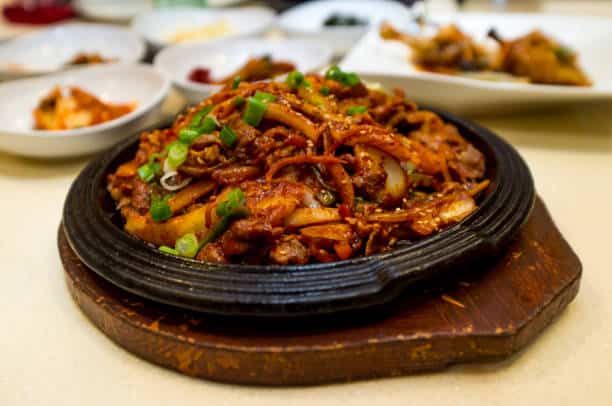
Local Ingredients
Korean cuisine is known for its use of fresh and local ingredients. Each region has its own unique ingredients that are used in traditional dishes.
Seoul
In Seoul, the most commonly used ingredients are rice, soy sauce, sesame oil, garlic, and gochujang. These ingredients are used in a variety of dishes, from bibimbap to bulgogi.
Gangwon
Gangwon is known for its fresh seafood, such as raw fish and squid. The province is also known for its mountain vegetables, such as fernbrake and bellflower roots.
Jeolla
Jeolla is known for its agricultural products, such as rice, beans, and vegetables. The province is also known for its seafood, such as oysters and abalone.
Gyeongsang
Gyeongsang is known for its spicy cuisine, with gochujang being a commonly used ingredient. The province is also known for its pork, which is used in dishes such as dwaeji gukbap.
Jeju
Jeju is known for its fresh seafood, such as abalone and sea urchin. The island is also known for its black pork, which is used in dishes such as black pork bulgogi.

Traditional Recipes
Korean cuisine has a rich history, and many traditional recipes have been passed down for generations. These recipes are often simple but flavorful, and reflect the ingredients and flavors of each region.
Bibimbap
Bibimbap is a dish that originated in Seoul and is now enjoyed all over Korea and around the world. The dish is made with rice, vegetables, meat, and a fried egg. The ingredients are arranged in a bowl and topped with a spicy sauce made from gochujang, sesame oil, and soy sauce. The dish is then mixed together before eating.
Hweh
Hweh is a raw fish dish that originated in Gangwon. The fish is sliced thinly and served with a variety of side dishes such as soy sauce, wasabi, and vegetables. The dish is typically served with a bowl of rice and a spicy soup made with fish bones.
Kongnamul Gukbap
Kongnamul gukbap is a soup made with soybean sprouts and rice that originated in Jeolla. The soup is typically served with a variety of side dishes such as kimchi and pickled vegetables.
Sannakji
Sannakji is live octopus that is sliced thinly and served with a variety of side dishes such as soy sauce and vegetables. The dish originated in Gyeongsang and is known for its unique texture.
Haemul Pajeon
Haemul pajeon is a seafood pancake that originated in Jeju. The pancake is made with seafood and scallions and is typically served with a soy sauce and vinegar dipping sauce.
Culture Influences
Korean cuisine has been influenced by a variety of factors, including geography, climate, and cultural interactions with neighboring countries.
China
Korean cuisine has been influenced by Chinese cuisine, with dishes such as jajangmyeon (noodles with black bean sauce) and tangsuyuk (sweet and sour pork) being popular in Korea.
Japan
Korean cuisine has also been influenced by Japanese cuisine, with dishes such as sushi and tempura being popular in Korea.
United States
Korean cuisine has gained popularity in the United States in recent years, with dishes such as Korean fried chicken and kimchi becoming more widely available.
Modern Innovations and Global Popularity
In recent years, Korean cuisine has gained immense popularity worldwide. The Korean wave, or “Hallyu,” has contributed to the global fascination with Korean food, K-pop, and Korean dramas. Korean restaurants have proliferated in various cities, introducing the world to the bold flavors and comforting dishes of this rich culinary heritage.
Conclusion
Korean cuisine is known for its unique flavors and ingredients, with each region having its own distinct culinary traditions. From the delicate flavors of Seoul cuisine to the bold and spicy flavors of Gyeongsang cuisine, Korean cuisine offers a wide variety of dishes that reflect the ingredients and flavors of each region. The use of fresh and local ingredients, combined with traditional recipes that have been passed down for generations, make Korean cuisine a rich and flavorful culinary experience.


Thanks for sharing. I read many of your blog posts, cool, your blog is very good.